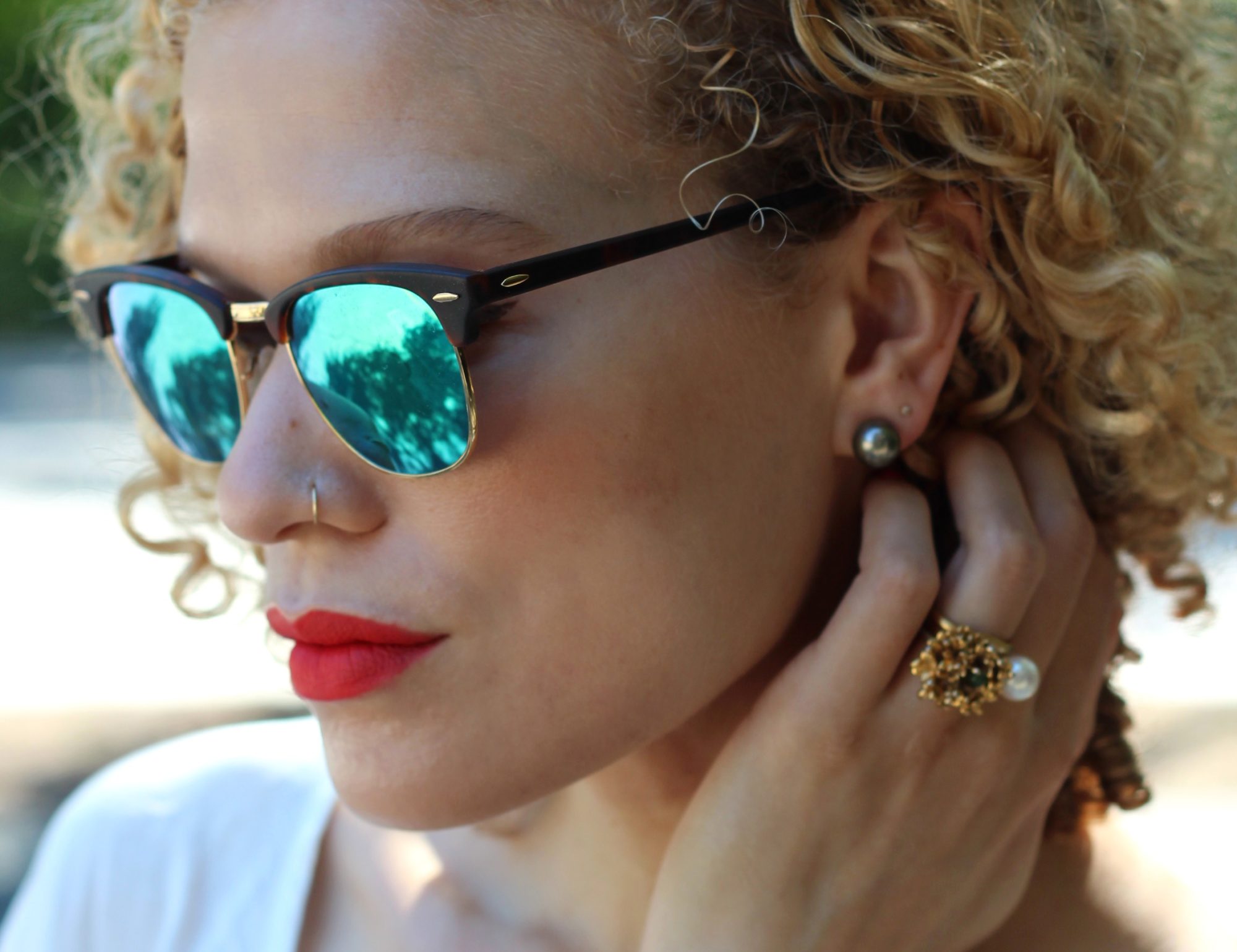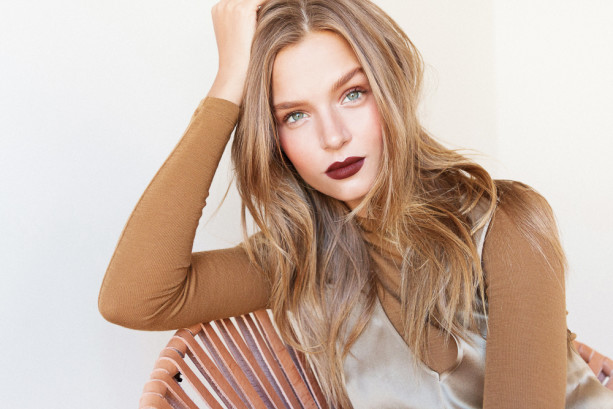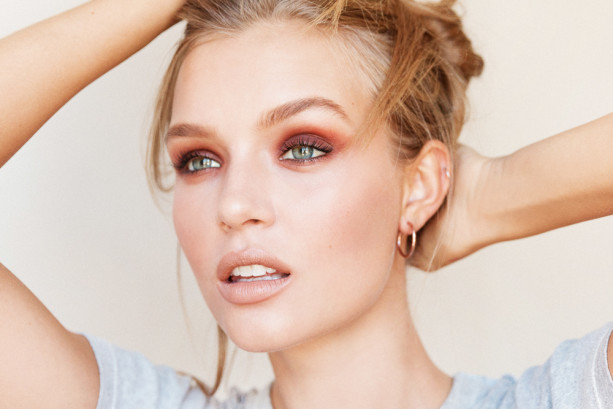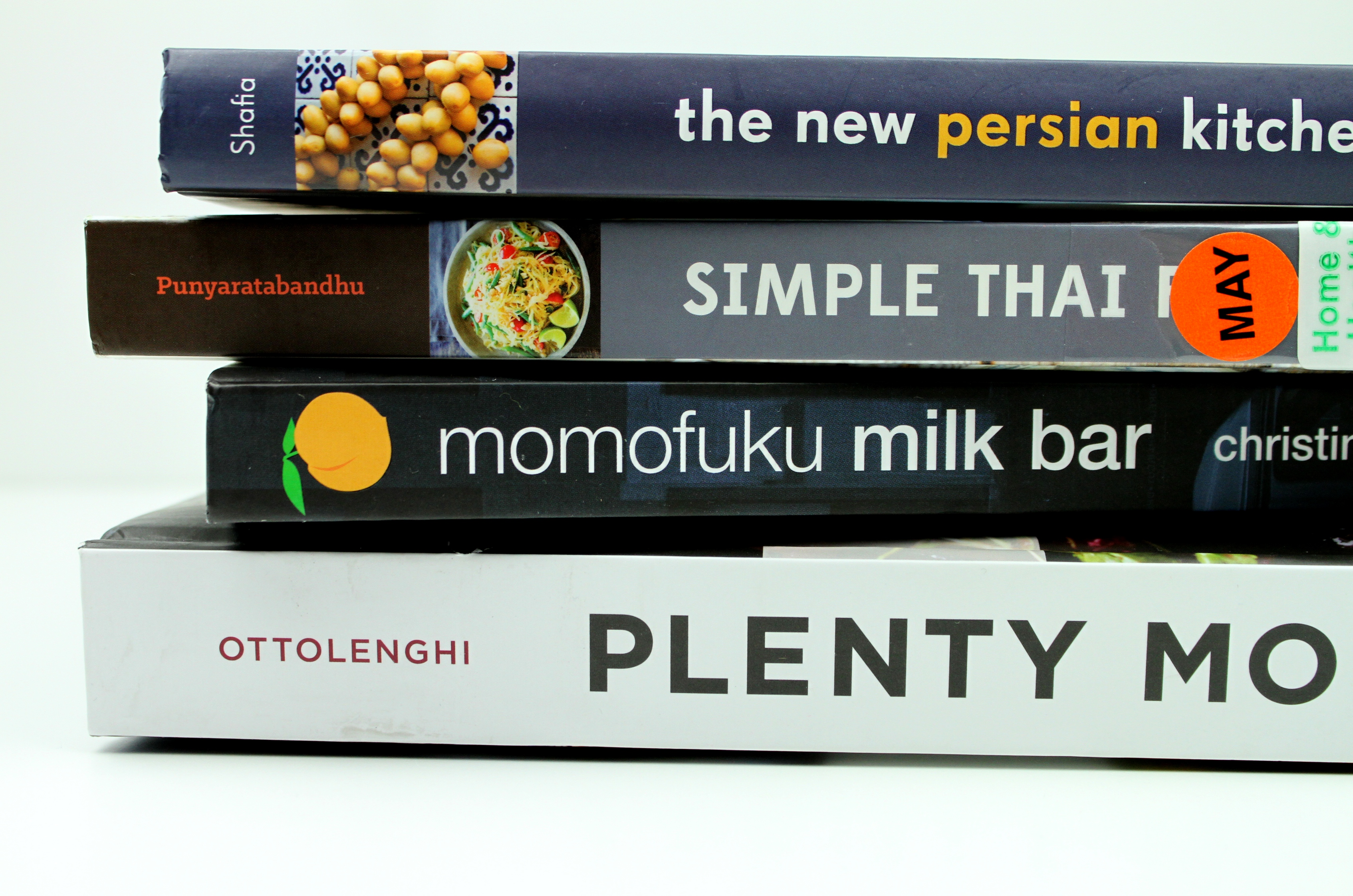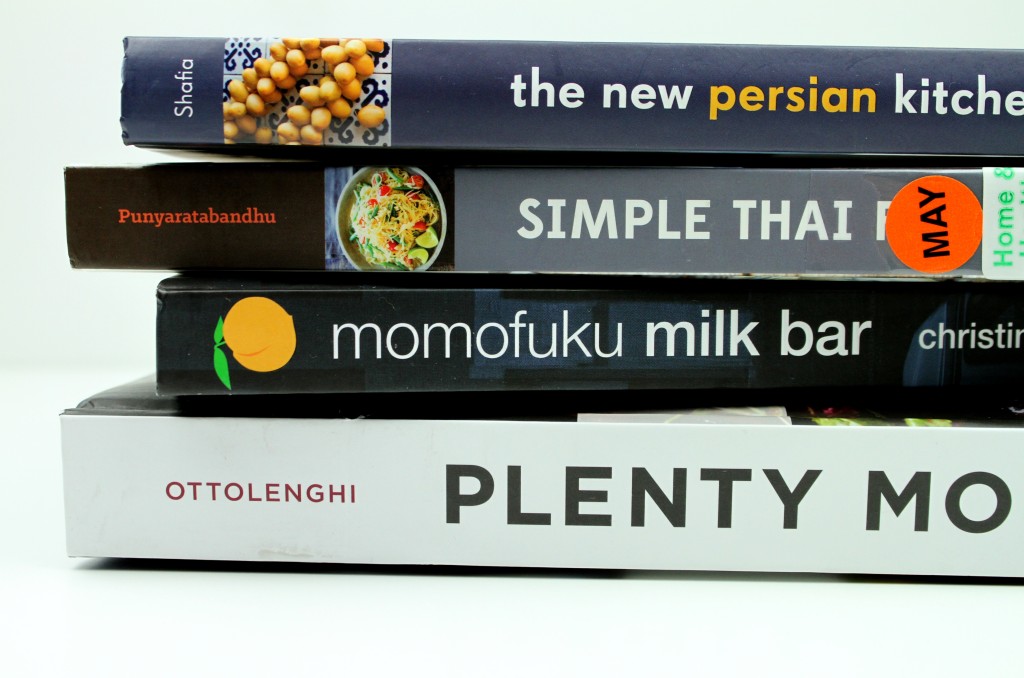While I often find a makeup look interesting or beautiful, it’s relatively uncommon that I actually want to recreate it on myself. I’ll make a mental note of elements I like here and there, which notes presumably accumulate in my unconscious to manifest at some later time, but usually don’t want to just copy the exact look.
Unless it’s this gorgeous.
This is the work of Victoria’s Secret makeup artist Hugo Vanngo [as featured in intothegloss], who obviously does restrained elegance well. The article was about a fresh take on earth tones, and I really love the first two looks he created (full article here).
The contrast of the deep garnet lip with the minimally contoured eye is so chic. The eye makeup is almost undetectable, with most of the focus going to the enhanced brows and rosy cheeks. Key that he didn’t bring the blush too far toward the center of the face, which keeps the look grown up. Imagine a vertical line coming down from the outside corner of the eye, this blush only slightly crosses that line, and only at the hazy edge of the zone of color. Compare this with a youthful blush look centered on the apples of the cheeks – a distinctly different look (urge you to try this at home).
This second look is LIFE. I love everything about the colors on the eye here. A prune lid with a rusty brown, fairly graphic crease color. Defined lashes but still natural (not doll drama, which I personally don’t like on myself). The faintest presence of bronzer and a peachy nude lip to allow the eyes to dominate…perfect. Shades of violet look lovely with every eye color, and if a crayola purple is too much for you, this kind of muted jewel tone (amethyst tempered with taupe, violet tempered with brown) is a beautiful way to go.
Will have to remember to document trying these looks out.
images via intothegloss
